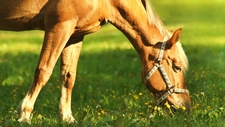Consumers

TEKS Objective
The student is expected to investigate that most producers need sunlight, water, and carbon dioxide to make their own food, while consumers are dependent on other organisms for food.
Essential Understanding
The student knows and understands that living organisms within an ecosystem interact with one another and with their environment.
Science Background
Another Link in the Food Chain: Geography4Kids (website) - Quick review of the major components of food chains, along with an explanation of producers, consumers and decomposers, and their interactions.
Another Link in the Food Chain
Geography4Kids, www.geography4kids.com
Invertebrates of the Compost Pile: Cornell University (website) - While this site is specific to invertebrates in the soil, the background information is applicable to all consumers in a food chain.
Invertebrates of the Compost Pile
Cornell University, www.cornell.edu
Signature Lesson
Animals’ Needs: BioEd Online (website) - Students observe and compare a worm model and a live worm, create a terrarium for the worms and observe them over time to learn that animals need air, water, food and a place to be.
- Supporting Lessons
- Extensions
- Assessment Ideas
- Literature Connections
- Related
TEKS - Additional Resources
Supporting Lessons
The Wildlife Web II: NatureWorks (website) - Investigate how consumers (carnivores, herbivores and omnivores) depend on other organisms and nonliving components within their environments for food and survival. Includes extensions and links to additional resources.
Elaboration Lessons and Extensions
What are Ecosystems? Texas A&M University (website) - Students conduct group research to learn about ecosystems, and then create mobiles that reflect specific, assigned ecosystems.
Assessment Ideas
Have students write one paragraph explaining how animals need plants and other animals to survive, and a second paragraph explaining how plants need animals.
Literature Connections
Food Chains and Webs: From Producers to Decomposers. Spilsbury, Louise (ISBN-13: 978-1403455109)
Who Eats What? Food Chains and Food Webs. Lauber, P. and Keller, H. (ISBN-13: 978-0064451307)
The World of Food Chains with Max Axion, Super Scientist. O’Donnell, Liam (ISBN-13: 978-0736868396)
Food Webs: Interconnecting Food Chains. Gray, Susan (ISBN-13: 978-0756532611)
Pass the Energy, Please! Shaw McKinney, Barbara (ISBN-13: 978-1584690016)
What Are Food Chains and Food Webs? Vogel, Julia (ISBN-13: 978-1602707962)
Additional Resources
Chain Reaction: EcoKids (website) - Have students work through this animated game to learn the basics about producers and consumers in two different food chains.
TEKS Navigation
Grade 4
Need Assistance?
If you need help or have a question please use the links below to help resolve your problem.

Comments